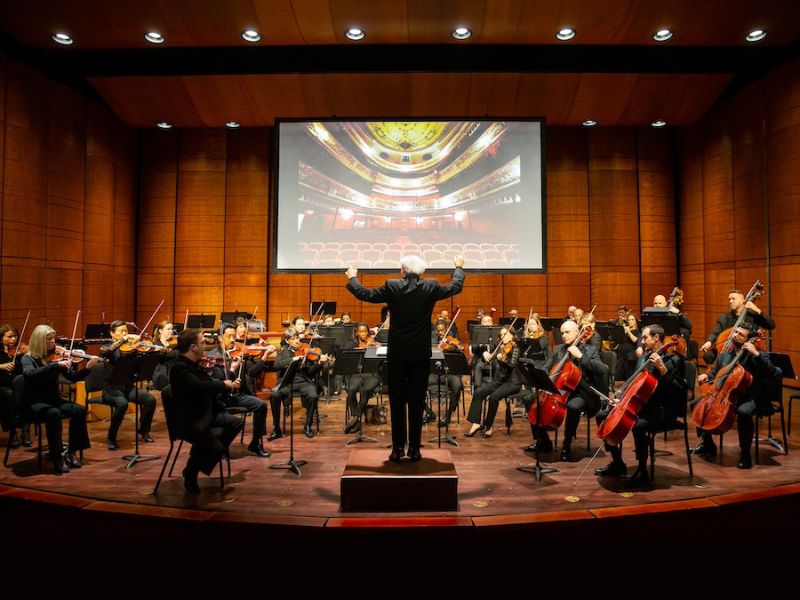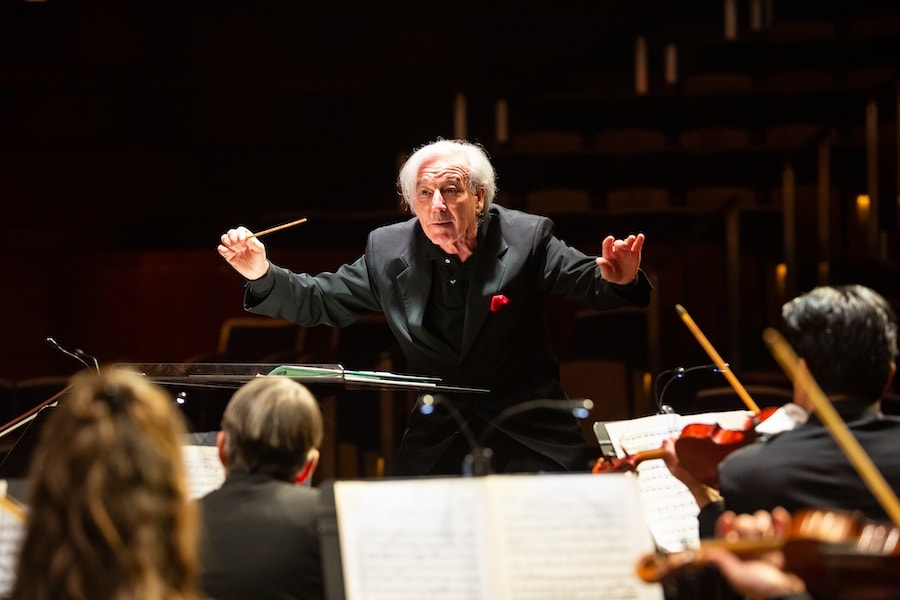I maintain that Washington, DC, is a city in search of a definitive cultural identity. I say this in spite of the phalanxes of world-class (and all free) museums on the mall and our iconic presidential monuments, around which, as one writer put it, the jets from National Airport “swoop like famished gulls.” Aren’t many of us, like those “gulls,” famished for challenging yet meaningful and restorative art experiences that can offer real light to the dark blight in which we find ourselves?
I wager there are exceptional visionaries in our midst to show us the way if only our major journalism and media outlets took seriously local arts coverage and invited the public into the conversation and the shaping of a cultural “there” here. It certainly can’t happen with roadshows and rehashed packaging of the same-old-same-old. Some are predicting that in five years arts coverage in The Washington Post will be no more. I remind us all: cultural civilization dies in darkness.

However, Thursday night, Angel Gil-Ordoñez, music director of Washington’s PostClassical Ensemble (PCE), produced a bold, eccentric program, bringing together two art forms in a performative experience, organized around conversation about their overlapping vocabularies, metaphors, and processes. He asked, what can we learn about these forms by taking a look at them side by side? And I ask, what can we learn about who we are and what we need to sustain and enliven us?
The title of the program — Bouncing Off the Walls: Music and Architecture — neatly captures the slightly cheeky, endlessly curious nature of Gil-Ordoñez. He had invited into his exploration and conversation a special guest curator Philip Kennicott, the Pulitzer Prize–winning architectural critic of The Washington Post. Kennicott is not only an astute thinker and writer about architecture but a devoted music listener and someone who has written extensively about that art form also, including reviewing music in performance. The evening went back and forth between the PCE playing illustrative compositions curated from the orchestral repertoire and a kind of “color commentary” by Kennicott. The two men brought the audience into the process of their engagement, clearly fueled by deep respect and mutual affection, and one that furthers their keen excitement as they both discover new ideas about shared concepts and processes of the two art forms.
Early in the evening, I suddenly sat up alert to the rarity of what was taking place. Here, in a sold-out auditorium at the Kennedy Center, full of savvy and intellectually curious audience members, a process was unfolding that held an important key to what an art experience should be in DC for its cultural identity to matter. In a city where the media dispenses coverage nightly of the contentious haranguing that passes for political process today and the complete devolution of anything resembling democratic civilization, we were all privy to and practicing intentional listening and an appreciation of some of the best of humanity, its ideas and endeavors.
The program began with a Beethoven overture, “The Consecration of the House.” Gil-Ordoñez chose the piece because it had been composed to celebrate the reopening of the newly renovated Josefstadt Theater in Vienna: a piece of music “built” to honor a building. The orchestra played the short overture through, then Kennicott analyzed the piece. Using Beethoven’s score projected onto a giant screen, he demonstrated how, in the opening the three elemental (major harmonic) chords in the composer’s structure were analogous to designing a building. Also, the notation of those chords in a score was the equivalent of verticals in an architect’s sketch.
The overture was played again, deepening our experience of the piece. Simultaneously, images of the Josefstadt Theatre appeared on the screen, giving us not only a greater appreciation of how to look at architectural structure but an understanding that the two art forms speak to each other and have a language in common: repetition and modulation, harmony and dissonance, symmetry and asymmetry, geometric and ornate.
One of the other key interests explored in the evening was how playing music can serve as an acoustical test of a particular space. In Beethoven, those pounding chords with separation provided an opportunity to test reverberation time, while the woodwind passages gave us an appreciation for the Terrace Theater’s clarity.

Giovanni Gabrieli’s “Sonata pian forte” from 1597 provided the opportunity to move musicians to different locations and in different groupings to make spatial music experiences. The piece was written for San Marco’s Basilica in Venice, one of those great reverberating ecclesiastic spaces. But even here in DC, by placing two groups of musicians playing brass instruments across the auditorium from each other in different balconies, the audience was suddenly immersed in the music. “El Maestro” turned out to the auditorium to conduct, facing the audience. It heightened the excitement to be intently watching, as if part of the orchestra and waiting for cues.
Papa Haydn came next on the program, and, to my mind, this was the least intellectually stimulating and musically satisfying work on the program. Let’s blame the Reformation and the rise of the bourgeoisie! Perhaps symmetry in architecture as in music lulls many contemporary listeners into a stupor.
If so, Anton Webern’s “Five Pieces for Orchestra, op. 10” provided a tingling shock to the system, like plunging into an icy river. Brief, minimalistic, an exercise in economy and listening to isolated sounds and textures of instruments, it was truly the German experience compound of klangfarbenmelodie (sound color melody).
To further illustrate shared concepts in music and architecture, Gil-Ordoñez brought colleague Hany Hassan into the mix throughout the evening with videos of the architect sketching buildings while we listened. Gil-Ordoñez had done something like this last season in the program Entwined with the artist Kevork Mourad sketching on stage in real time a cartoon of a synopsis of a deFalla opera. The experience, like watching a high-wire circus act without a net, was delightful. If only Hasan might have been persuaded to do the same, standing on stage!
I would also have loved more engagement of conversation between Kennicott and Gil-Ordoñez in real-time rather than Kennicott presenting.
The evening ended with Rossini’s “William Tell Overture,” and you can’t get a more rousing, spectacular crowd-pleaser than that. There were a few whoops and hollers from the audience, like children let out to play.
Alas, one night only. The subject was vast, and there was time only to scratch the surface. I hope Gil-Ordoñez and Friends might curate a series of such programs pairing art forms.
Running Time: 75 minutes, no intermission.
Bouncing Off the Walls: Music and Architecture played November 16, 2023, performed by PostClassical Ensemble in the Terrace Theater at John F. Kennedy Center for Performing Arts, 2700 F St NW, Washington, DC.
Check out two programs coming later this season, Amazing Grace: In Paradisum and Beyond Category: The Concert Music of Duke Ellington. Visit postclassical.com.




